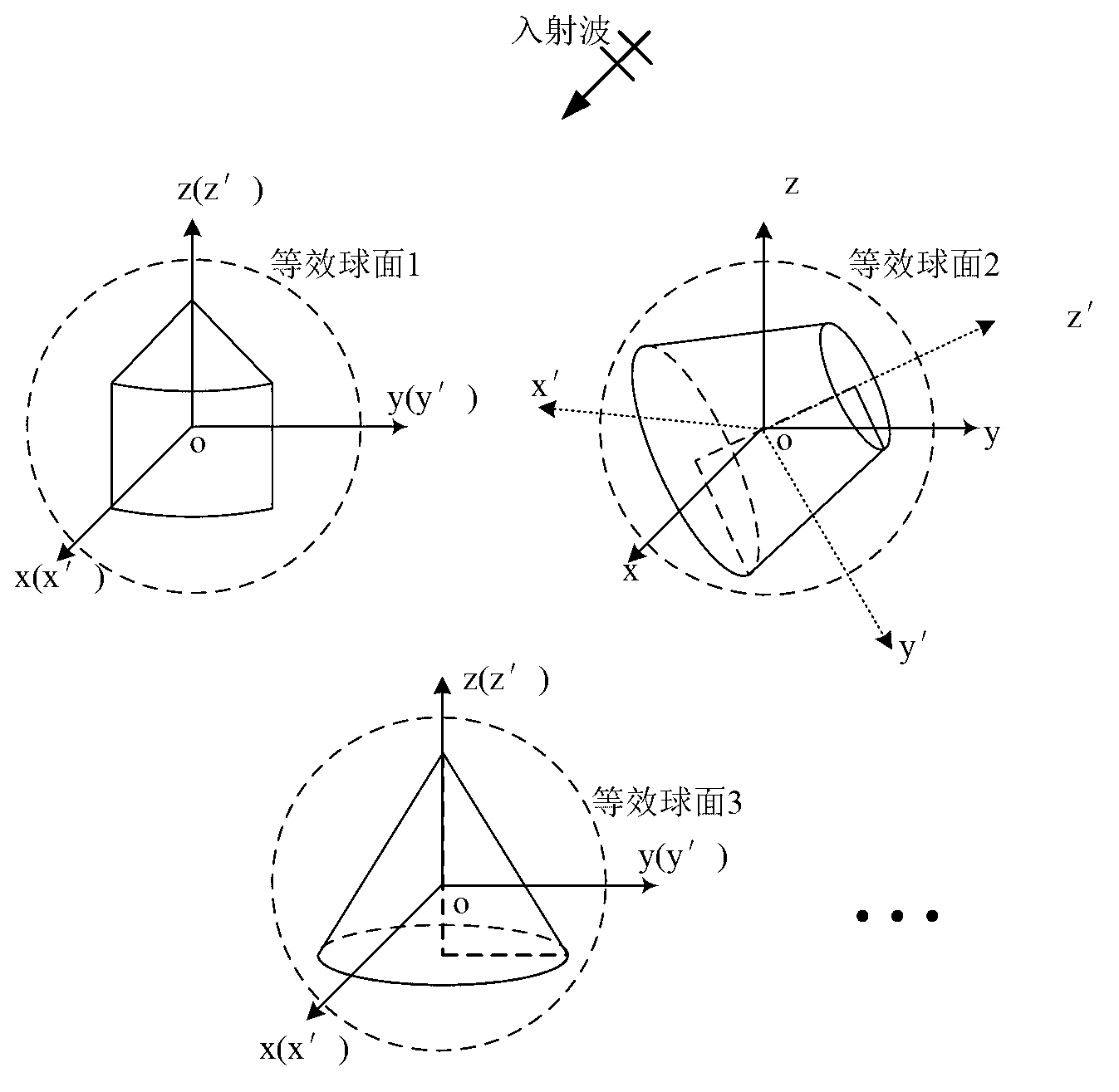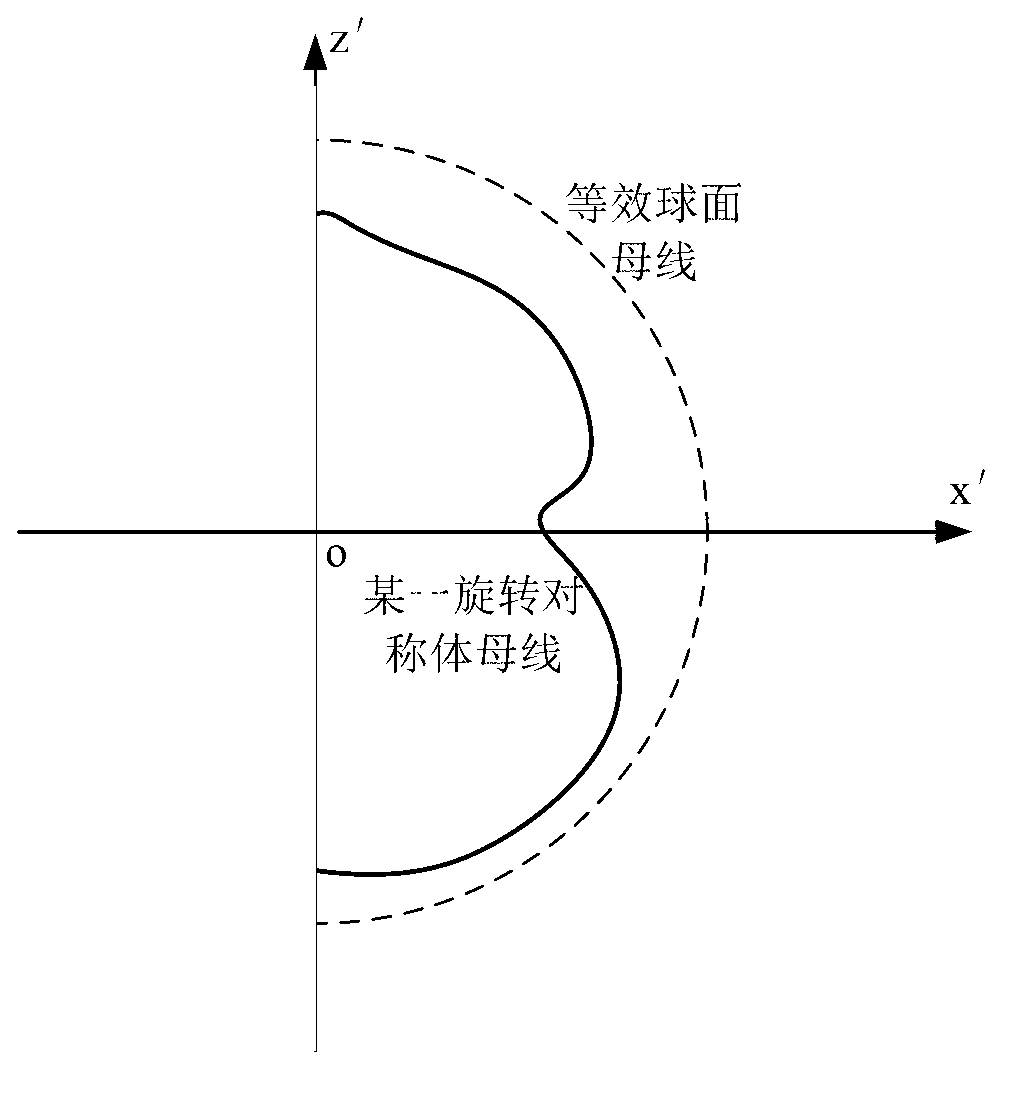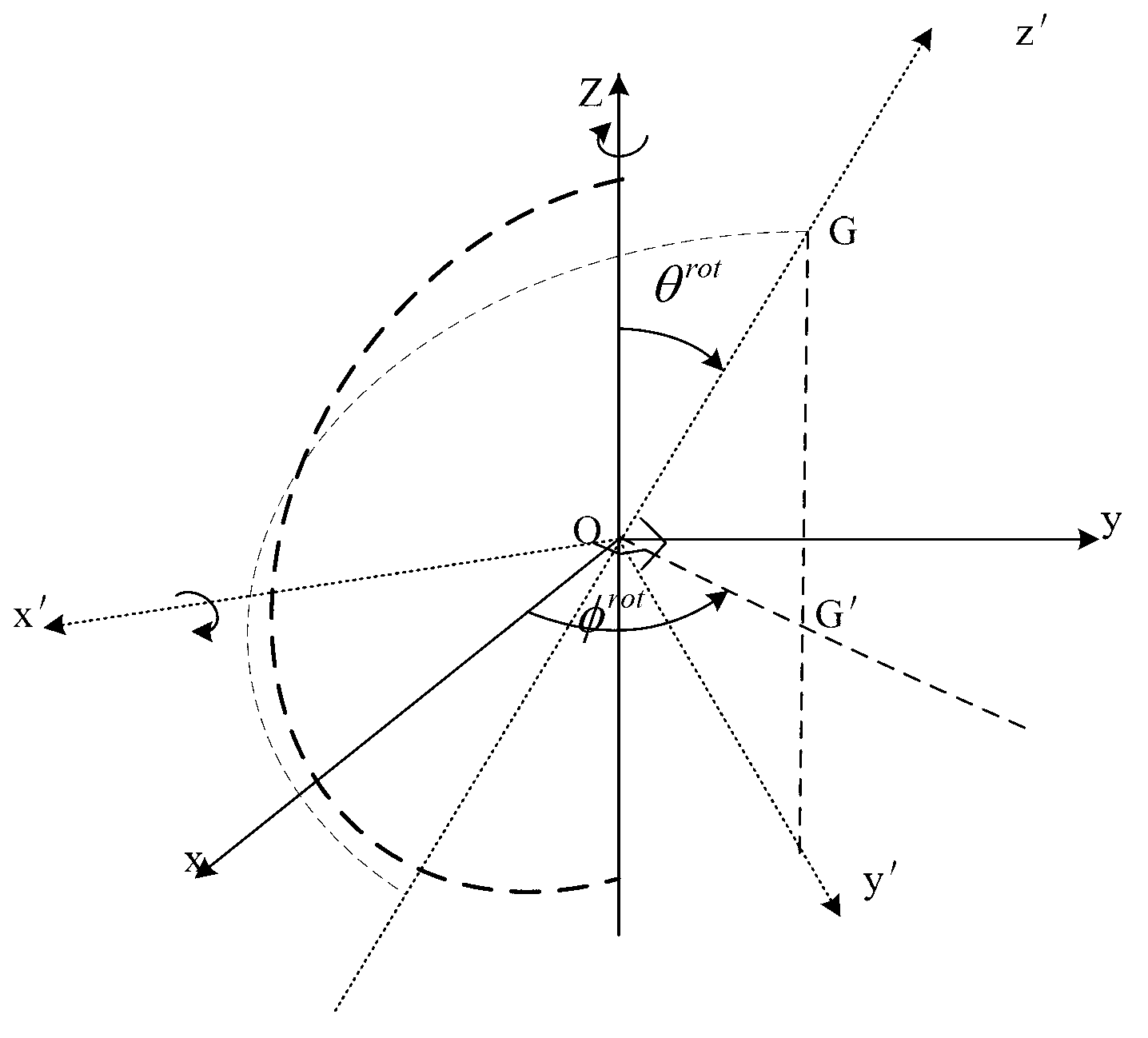Simulation method for electromagnetic scattering characteristic of plurality of non-coaxial rotating symmetric bodies
A technology of electromagnetic scattering characteristics and rotationally symmetric body, which is applied in the field of simulation of electromagnetic scattering characteristics, can solve the problems such as the inability to reduce the dimension of rotationally symmetric body, the inability to exert high-efficiency performance, and the establishment, and achieves convenient modeling, fast simulation speed, and reliable theory. Effect
- Summary
- Abstract
- Description
- Claims
- Application Information
AI Technical Summary
Problems solved by technology
Method used
Image
Examples
Embodiment 1
[0121] According to the method for simulating the electromagnetic scattering characteristics of multiple non-coaxial rotational symmetric bodies described in the present invention, we simulate the electromagnetic scattering of an actual multi-warhead.
[0122] Multiple rotationally symmetrical warheads such as Figure 7 As shown, the second local Cartesian coordinate system of the No. 1 warhead is used as the global coordinate system, and each warhead is uniformly distributed along the x and y directions with a period of 2m. The surface of the warhead is a paraboloid, the diameter of the paraboloid is 0.500m, the depth is 1.5625m, and the focal length is 0.01m. The incident angle of the plane wave is (0°, 0°), and the working frequency is 300MHz. We use the method of the present invention to compare with the simulation results of multi-layer fast multipoles, such as Figure 8 As shown, the results are in good agreement with each other, which proves the correctness of the met...
PUM
 Login to View More
Login to View More Abstract
Description
Claims
Application Information
 Login to View More
Login to View More - R&D
- Intellectual Property
- Life Sciences
- Materials
- Tech Scout
- Unparalleled Data Quality
- Higher Quality Content
- 60% Fewer Hallucinations
Browse by: Latest US Patents, China's latest patents, Technical Efficacy Thesaurus, Application Domain, Technology Topic, Popular Technical Reports.
© 2025 PatSnap. All rights reserved.Legal|Privacy policy|Modern Slavery Act Transparency Statement|Sitemap|About US| Contact US: help@patsnap.com



